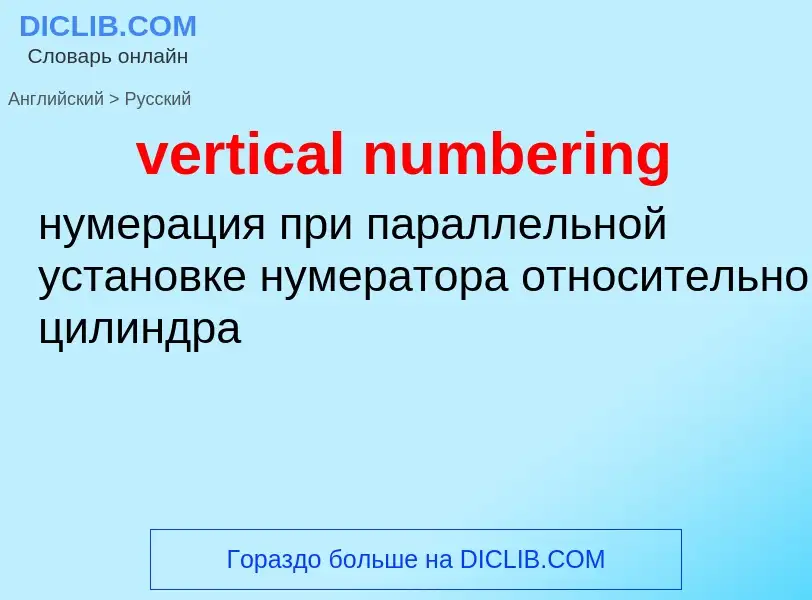Перевод и анализ слов искусственным интеллектом ChatGPT
На этой странице Вы можете получить подробный анализ слова или словосочетания, произведенный с помощью лучшей на сегодняшний день технологии искусственного интеллекта:
- как употребляется слово
- частота употребления
- используется оно чаще в устной или письменной речи
- варианты перевода слова
- примеры употребления (несколько фраз с переводом)
- этимология
vertical numbering - перевод на русский
[və:ti'kæliti]
общая лексика
вертикальность
существительное
общая лексика
вертикальность
вертикальное положение
['və:tik(ə)l]
общая лексика
вертикальный
теменной
вертикаль
вертикально-ковочный
вертикальный круг
кадровый отклоняющий
отвесен
отвесная линия
отвесный
перпендикуляр
пята
пятник
фронталь
строительное дело
вертикальный элемент, стойка (решётки фермы)
вертикаль, вертикальная линия
прилагательное
общая лексика
вертикальный
стоячий
направленный вверх
отвесный
математика
перпендикулярный
анатомия
теменной
синоним
антоним
существительное
['və:tik(ə)l]
общая лексика
вертикальная линия
перпендикуляр
физика
вертикаль
вертикальная или отвесная линия
(the vertical) перпендикуляр
астрономия
вертикал
топография
плановый аэрофотоснимок
общая лексика
вертикальное положение
вертикальность
математика
вертикальная плоскость
Определение
Википедия
There are many different numbering schemes for assigning nominal numbers to entities. These generally require an agreed set of rules, or a central coordinator. The schemes can be considered to be examples of a primary key of a database management system table, whose table definitions require a database design.
In computability theory, the simplest numbering scheme is the assignment of natural numbers to a set of objects such as functions, rational numbers, graphs, or words in some formal language. A numbering can be used to transfer the idea of computability and related concepts, which are originally defined on the natural numbers using computable functions, to these different types of objects.
A simple extension is to assign cardinal numbers to physical objects according to the choice of some base of reference and of measurement units for counting or measuring these objects within a given precision. In such case, numbering is a kind of classification, i.e. assigning a numeric property to each object of the set to subdivide this set into related subsets forming a partition of the initial set, possibly infinite and not enumeratable using a single natural number for each class of the partition.
In some cases (such as computing, time-telling, and in some countries the numbering of floors in buildings) zero-based numbering is used, where the first entity is assigned "zero" instead of "one".
Other numbering schemes are listed by field below.


